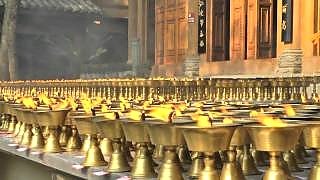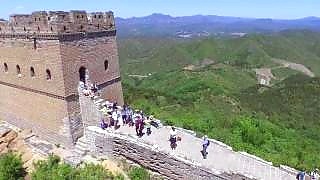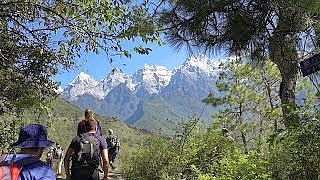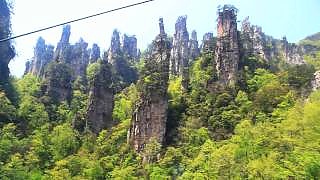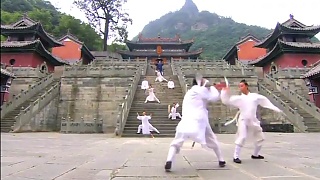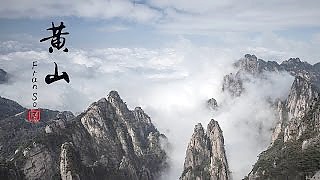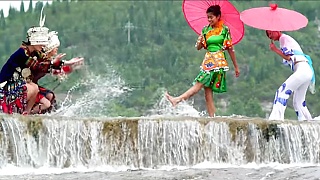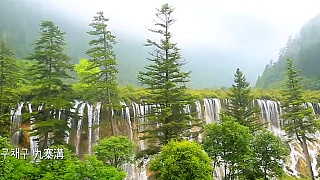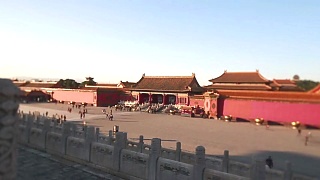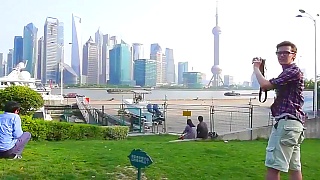With Beijing Old Liu ...
[640],shadow=true,start=,stop=MangShan WuZhiFeng Scenic Area visitor guide
Overview
The MangShan WuZhiFeng Scenic Area, located in the MangShan National Forest Park in HuNan Province, is renowned for its stunning natural landscapes, diverse flora and fauna, and the iconic WuZhiFeng (Five-Finger Peak). It is a perfect destination for nature lovers and outdoor enthusiasts.
Getting There
Location: YiZhang County, ChenZhou City, HuNan Province, China.
Public Transport:
- By Bus: Regular buses run from ChenZhou City to YiZhang County. From YiZhang, you can take a local bus or taxi to the MangShan National Forest Park.
- By Train: The nearest major railway station is in ChenZhou City. From there, you can take a bus or taxi to the park.
Opening Hours
- April to October: 8:00 AM to 6:00 PM
- November to March: 8:30 AM to 5:30 PM
Tickets
- Entrance Fee: ¥100
- Discounted Ticket (for children, students, and seniors): ¥50
Main Attractions
The MangShan WuZhiFeng Scenic Area is home to a variety of attractions:
- WuZhiFeng (Five-Finger Peak): This iconic peak resembles five fingers rising from the mountain, offering breathtaking views and challenging hikes.
- YunLong Waterfall: A magnificent waterfall cascading down a cliff, surrounded by lush vegetation.
- MangShan Temple: A historic temple located within the forest park, providing a serene atmosphere and cultural insights.
- Botanical Gardens: Home to a diverse range of plant species, including rare and endangered ones, making it a paradise for botany enthusiasts.
- Observation Decks: Various viewpoints throughout the park offer panoramic views of the surrounding mountains and forests.
Activities
Visitors can engage in numerous activities at the MangShan WuZhiFeng Scenic Area:
- Hiking: Explore the various trails that lead to scenic spots and peaks.
- Bird Watching: The park is home to many bird species, making it an ideal spot for bird watchers.
- Photography: Capture the stunning natural landscapes and wildlife.
- Camping: There are designated camping areas for those who want to experience the beauty of the park overnight.
- Guided Tours: Join a guided tour to learn more about the park's history, ecology, and cultural significance.
Dining and Refreshments
Several small restaurants and snack stalls are available within and around the MangShan National Forest Park, offering local HuNan cuisine and refreshments. It's advisable to bring your own snacks and water, especially if you plan on hiking.
Visitor Tips
- Best Time to Visit: Spring and autumn are the best times to visit due to the pleasant weather and beautiful scenery. Summer can be hot and humid, and winter can be cold.
- Wear Comfortable Shoes: The park has many trails and uneven terrain, so comfortable hiking shoes are recommended.
- Stay Hydrated: Bring plenty of water, especially during long hikes.
- Prepare for Weather: Bring a raincoat or umbrella during the rainy season, and dress in layers for temperature changes.
- Respect Nature: Follow park rules, stay on designated paths, and do not disturb the wildlife.
Nearby Attractions
- DongJiang Lake: A beautiful lake located in ZiXing City, perfect for boating, fishing, and enjoying the scenic views.
- WuLingYuan Scenic Area: Another UNESCO World Heritage Site known for its dramatic sandstone pillars and breathtaking landscapes.
- LangShan Mountain: Known for its unique Danxia landforms, it's a great place for hiking and exploring natural rock formations.
Conclusion
The MangShan WuZhiFeng Scenic Area in HuNan is a stunning natural destination offering a mix of beautiful landscapes, rich biodiversity, and cultural sites. Whether you're a nature enthusiast, hiker, or simply looking for a peaceful retreat, the scenic area provides an unforgettable experience.

 MangShan WuZhiFeng Scenic Area, HuNan province
MangShan WuZhiFeng Scenic Area, HuNan province








